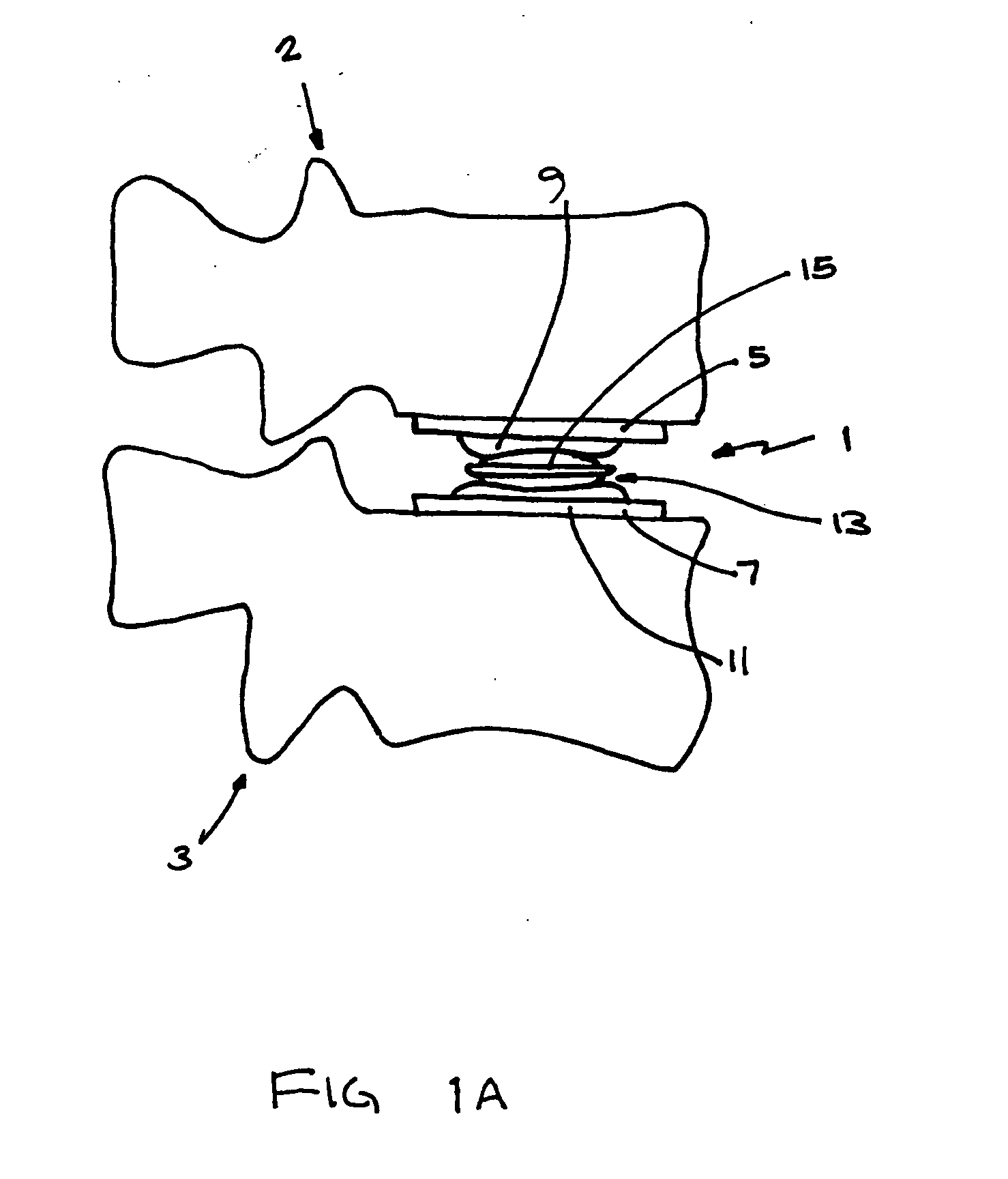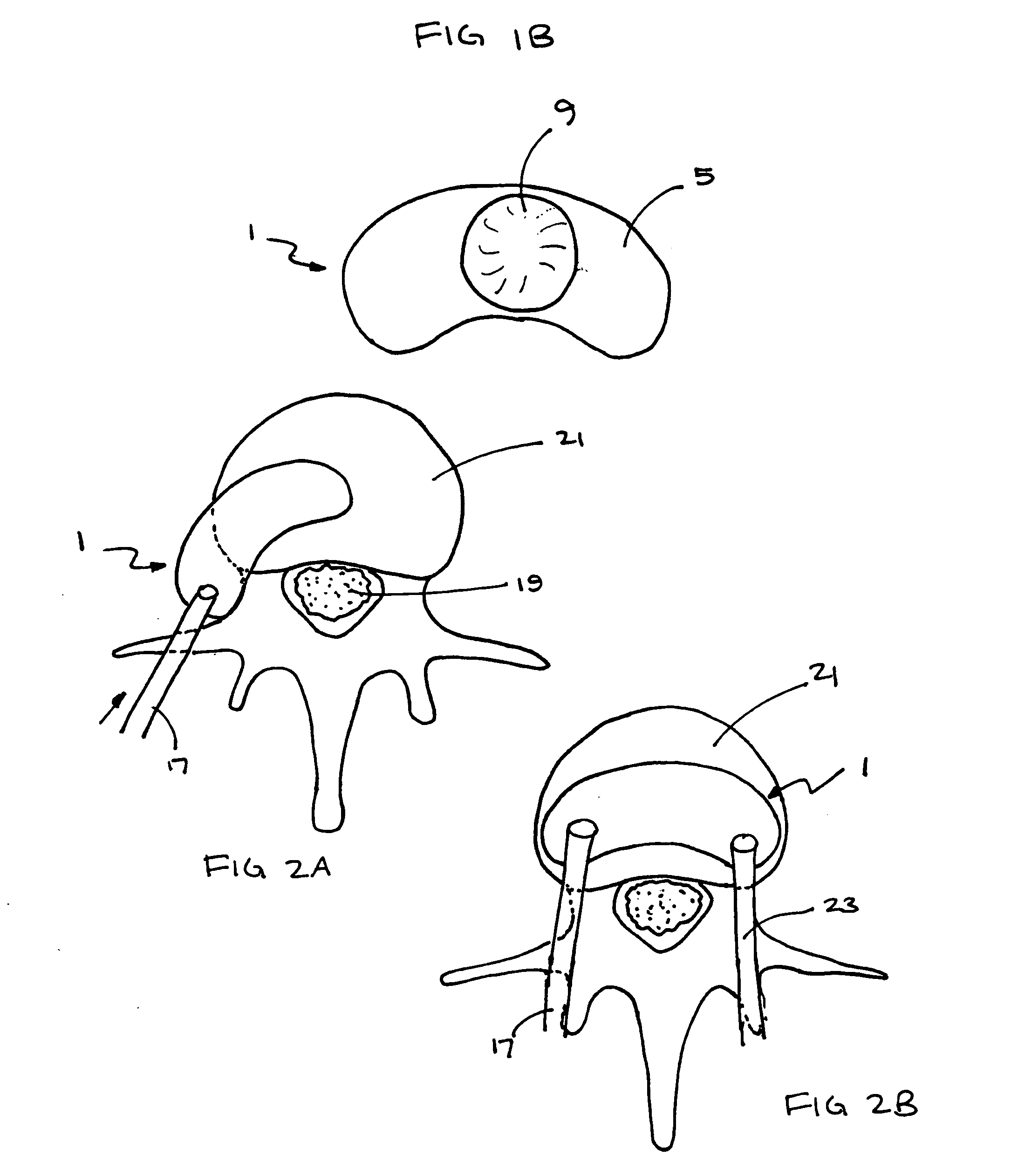Prosthetic spinal disc replacement
a spinal disc and prosthesis technology, applied in the field of prosthetic spinal discs, can solve the problems of spinal disc displacement or damage, leg pain, loss of muscle control, persistent or disabling back pain,
- Summary
- Abstract
- Description
- Claims
- Application Information
AI Technical Summary
Benefits of technology
Problems solved by technology
Method used
Image
Examples
Embodiment Construction
[0047] The present invention relates generally to a posterior prosthetic spinal disc for replacing a damaged disc between two vertebrae of a spine. The present invention also relates to a method for implanting a prosthetic spinal disc via posterior or posterior lateral implantation. In particular, the present invention encompasses a method for implanting the prosthetic spinal disc while avoiding or minimizing contact with the spinal cord.
[0048] As described in greater detail below, the prosthetic spinal disc may be articulating or non-articulating. In addition, the prosthetic disc may be formed of one, two, three or more units. For example, two units may be disposed in the medial-lateral direction at spaced apart locations, and the upper and lower portions of each unit have interfacing surfaces that form an arc in the anterior-posterior direction.
[0049] If multiple units are used, they may be spaced apart from each other or connected to prior to insertion in the patient or as they...
PUM
| Property | Measurement | Unit |
|---|---|---|
| angle | aaaaa | aaaaa |
| angle | aaaaa | aaaaa |
| total axial rotation | aaaaa | aaaaa |
Abstract
Description
Claims
Application Information
 Login to View More
Login to View More - R&D
- Intellectual Property
- Life Sciences
- Materials
- Tech Scout
- Unparalleled Data Quality
- Higher Quality Content
- 60% Fewer Hallucinations
Browse by: Latest US Patents, China's latest patents, Technical Efficacy Thesaurus, Application Domain, Technology Topic, Popular Technical Reports.
© 2025 PatSnap. All rights reserved.Legal|Privacy policy|Modern Slavery Act Transparency Statement|Sitemap|About US| Contact US: help@patsnap.com



